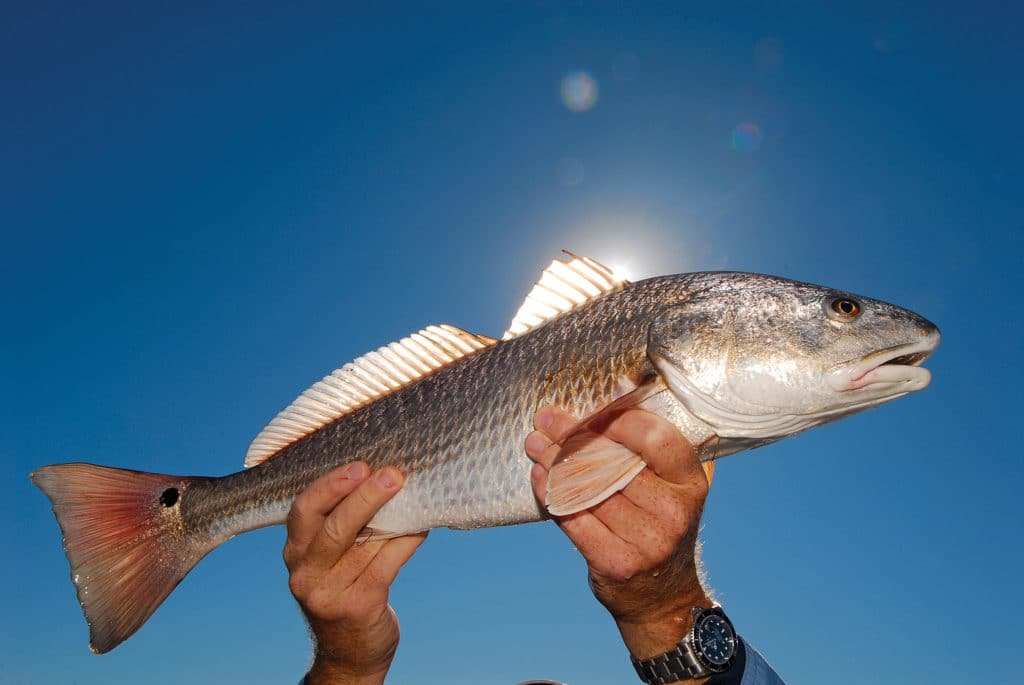
Spoon Fed
Thousands of casts, hundreds of refusals and countless hours of on-the-water experimentation — that’s the formula for developing an original fly pattern capable of hoodwinking a wide array of species. Accomplishing such a task requires an individual with profound creativity, a vast knowledge of tying materials and techniques, and an unworldly understanding of fish.
A few years back, I was lucky enough to meet a man who possesses all of the above characteristics — Jon Cave. Author, guide, casting instructor and world-renowned angler are just a few of his designations; nevertheless, Cave is also one of the forefathers of saltwater fly design. Cave’s Wobbler is unequivocally one of the most revolutionary saltwater fly patterns of all time and has spawned many spoon flies in existence today.
While Cave has traveled the world in pursuit of his favorite game fish, his earliest fly-fishing adventures took place in a tiny stream behind his house, in
rural Indiana where he fished for smallmouth bass.

After several years of working on charter boats in the Florida Keys, Cave ventured north to the center of the state, where he became a licensed guide, mainly fishing the flats of Mosquito Lagoon and the Indian River. The catalogs of saltwater patterns we have today did not exist, and when it came to fly design, most tiers were accustomed to think only in terms of size, silhouette and color. Very little consideration went into how a fly behaved in the water, or how it moved. Dissatisfied with the overall poor performance of store-bought flies, Cave went to work on developing an “action fly” — or what would later become known as Cave’s Wobbler.
The pattern was born from nothing more than a guitar-pick-size piece of prismatic tape, a hook and a little epoxy. It caught fish but spun a lot and was not very durable. The fly needed enough weight to generate a wobble but not to turn all the way over. The amount of weight and where it’s positioned on the fly were huge factors in making it function properly.
Early unweighted versions had a tendency to ride closer to the surface and, in order to be effective, needed to be fished very slowly. Cave wanted to avoid these characteristics, so he began investigating the effects of weight and water resistance against the fly. Weed guards and styles and sizes of hooks were explored, as well as bending the shank, but ultimately, lead eyes and their strategic positioning on the hook shank played the largest role in the flies’ performance. With a pair of goggles and an open mind, Cave observed the effects of these changes from the bottom of his pool and continued to tune the flies’ action accordingly. Perfecting this balancing act to impart the fly with its signature wobble was the first obstacle. Next, concerns of durability were addressed by replacing the prismatic tape with Mylar tubing. The woven Mylar was thick and durable, and amazingly, with a little repair work, one fly could last you the whole year.
When the Wobbler is tied perfectly, it takes on more of a peanut shape, and it’s that shape that makes it wobble. When tying the fly, slide the Mylar tubing over the hook shank, and tie it off the lead end at the bend of the hook. Coat the inside of the tube with epoxy and then tie off the open end at the eye. For the fly to work properly, both sides of the Mylar have to touch, and there can be absolutely no air pockets inside. If you wish, you could use UV acrylic on the outside after you epoxy the fly for better durability.
“When the epoxy is just starting to heat up and set, I pinch the materials with my thumbs and middle fingers and pull out the front and back of the Mylar, the back just a little bit more than I do in the front. It makes the water flow through there an odd way, and that’s got something to do with the action of the fly. The fly will work fine if you don’t do that, but the peanut shape looks better and it wobbles better too,” Cave says. Initially the Wobbler was developed for redfish, but Cave has received numerous reports over the years of the fly taking everything from Northern pike to peacock bass. When targeting redfish, cast it near but not in the school of fish and let it drop. A lot of times you don’t even have to strip; the fish pick the fly up as it flutters down. If you don’t get a strike on the first drop, strip long and slow.
During the last 20-plus years, this popular pattern has been tied in several colors and sizes, not to mention countless tail material variations. Although everyone has their favorite combination, the original pattern is sold through Umpqua dressed with gold Mylar tubing on hooks size 2 and 2/0. A sparse bunch of orange bucktail and a few strands of gold crystal flash shape the tail. Cave will tell you that the original version is his favorite, but he still ties a special version with a split tail that looks a lot like a crayfish — his go-to for smallmouths









